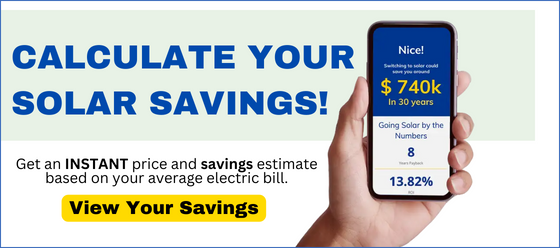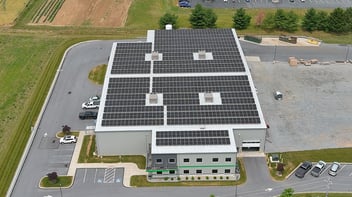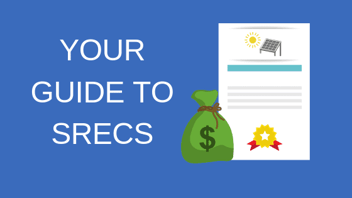How the Federal Solar Tax Credit Works
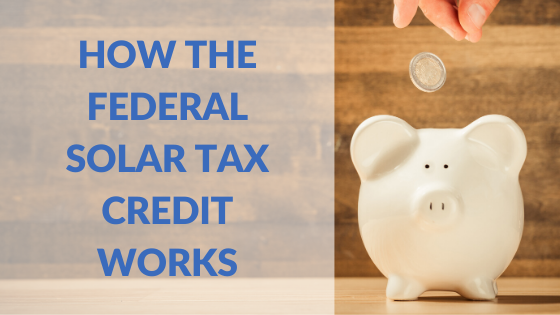
For years, the Solar Investment Tax Credit (ITC) has been a valuable incentive for individuals and businesses interested in investing in solar energy. However, with the passing of the Inflation Reduction Act (IRA) in 2022, the federal solar tax credit has received a significant upgrade.
Replacing the initial Solar Investment Tax Credit from the 2000s and 2010s, the new solar panel tax credit introduced in the IRA provides even greater benefits for those seeking to reduce the cost of installing a solar panel system.
Unfortunately, understanding just how much you can save is less cut and dry than the previous iteration of the ITC. That’s where this blog comes in. We’re here to unravel the intricacies so you come away with a clear picture of how it benefits you and your solar energy system.
Note: We want to emphasize that while we are experts in solar energy, we are not tax experts. The information provided in this blog is based on our interpretation of the tax codes. We strongly advise consulting with a tax expert or accountant before making any investments in solar panels.
The Solar Tax Credit (ITC) After The Passing of the Inflation Reduction Act
The Inflation Reduction Act’s federal solar tax credit determines federal solar incentives until 2032.
While the IRA offers tax incentives for solar across the board, benefits differ depending on the size of your system and the type of customer you are (residential vs. commercial vs. non-profit).
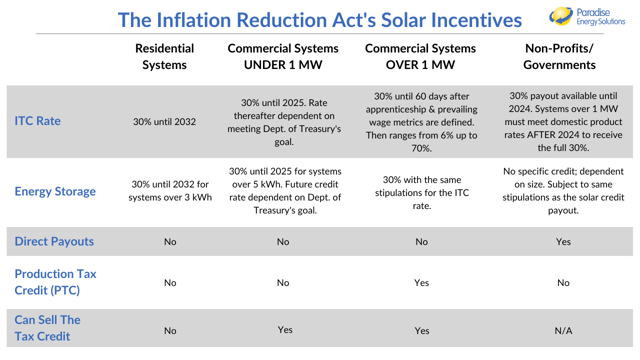
Below, we’ll explore how the Inflation Reduction Act will impact anyone looking to install a solar system. While the IRS has released specifications for the add-ons, it’s not yet 100% clear how these incentives will apply. Until then, here’s how the industry experts interpret the solar federal tax credit.
The Federal Solar Tax Credit For Homeowners
The residential investment tax credit is a straightforward and beneficial incentive for homeowners looking to invest in solar energy. Currently set at 30% across the board until 2032, this tax credit allows homeowners to reduce their tax liability by 30% of the total installation cost.
One of the great advantages of this tax credit is that homeowners don't have to worry if they can't utilize the entire credit in the first year. Homeowners have the advantage of carrying the credit forward until it is fully utilized, with a deadline of 2032. It's important to note that the residential tax credit cannot be used to recapture taxes from prior years.
Unlike businesses, homeowners are not eligible for the transferability rule, which allows businesses to transfer (sell) the credit to a third party. The residential tax credit is exclusively available to the homeowner who owns the solar system.
The residential investment tax credit provides homeowners with a substantial financial benefit, allowing them to reclaim a significant amount of money that would otherwise be paid to the IRS.
The Commercial Federal Solar Tax Credit
Systems Under 1 Megawatt (MW) AC Power Businesses and Farmers)
Anyone installing a solar system smaller than 1 MW of AC power will receive a tax credit of 30%. For businesses of most sizes and agricultural producers, this rate is guaranteed until 2025. Homeowners will get this rate until 2032.
Commercial projects of this size may also qualify for “adders.” If certain conditions are met, these adders can increase the tax credit to 40% or more. We dive into the details of the adders in a section below, but they include:
- Energy Communities (+10% tax credit)
- Domestic Content (+10% tax credit)
- Low-Income Areas (+10 - 20% tax credit)
The tax credit will also cover interconnection costs for projects under 5 MW.
Systems Over 1 Megawatt (MW) AC Power (Solar Developers, Utilities, XL Industrial)
For now, systems larger than 1 MW will receive the full 30% tax credit. However, once the IRS issues its guidelines, the rate will vary based on how well the project meets a series of metrics.
The tax credit begins at 6% across the board but can increase to 70% if certain conditions are met. This includes the same three adders as smaller commercial systems, in addition to a prevailing wage bonus:
- Prevailing Wage: The 6% can increase to 30% if the project meets apprenticeship (requirement of the installation company) and prevailing wage requirements.
- Energy Communities (+10% tax credit)
- Domestic Content (+10% tax credit)
- Low-Income Area (+10 - 20% tax credit)
The tax credit will cover interconnection costs for projects under 5 MW.
These large systems can also choose a production tax credit (PTC) over the ITC. This credits system owners based on how much electricity the system produces. The current rate is $0.026/kWh but will increase with inflation.
How to Qualify for the Solar Tax Credit Adders
There are a series of commercial tax credit adders that can boost the tax credit amount by 10% each. Commercial systems under and over 1 MW may qualify for these adders, but residential systems will not. Below, you’ll find the additional requirements commercial systems must meet to qualify for each.
Energy Communities 10% Tax Credit Adder
This adder seeks to speed up the adoption of renewable energy in key areas of the country. Qualifying systems can add 10% onto their tax credit if their system is located in or on one of the following:
- A brownfield site as defined by CERCLA.
- A fossil-fuel closure census tract, which is an area with a post-1999 coal mine closure or an area with a post-2009 coal-fired electric generating unit closure.
- Metropolitan Statistics Area (MSA) with an economic dependence on coal, oil, or natural gas. These areas will change every year. To qualify, the area must have:
- 0.17%+ employment or 25%+ local tax revenues related to the extraction, processing, transport, or storage of coal, oil, or natural gas, and;
- A higher-than-average unemployment rate based on last year’s national average.
Use this map to determine if you're in an area that qualifies.
Domestic Content 10% Tax Credit Adder
In efforts to bolster US manufacturing, commercial systems of all sizes can qualify for an additional 10% tax credit if a specific amount of domestic components are used. While we have specifications on this, it will take a few years to know exactly how this will work out.
For now, 100% of the steel or iron on the project must be made in the US. If this isn’t met, the project won’t qualify for the 10% adder. Additionally, at least 40% of the dollar value of the components that make up your solar panels and inverters must be made in the US. This rate jumps up to 55% of components in 2027.
Solar panels or inverters assembled in the US but made from foreign parts won’t count toward that 40%. As of now, we're unaware of any panel or inverter that qualifies.
Subcomponents like the wiring, nuts, bolts, and clamps will not count toward the 40% carve-out.
The burden of proving that 40% of components on a product are made domestically would fall on the manufacturer of these items. They would then pass that information to the installer, who would pass that on to you as the customer. It’ll be your responsibility to save this information and use it when you file taxes.
To be frank, it gets very complicated if only a portion of the manufactured product and its components are made in the US. In order to prove at least 40% are made in the US, manufacturers would have to divulge a cost sheet for their product. So far, we have not seen a company do that, and it's very unlikely that we will.
If a business seeking to satisfy the domestic content adder sees project costs increase by more than 25%, or if a product is unavailable, they may qualify for a waiver. However, we want to note that the process to claim this waiver is undefined at this time.
Low-Income Communities 10% Tax Credit Adder
The tax credit adder for low-income communities seeks to bring more renewable energy to areas that may be underserved, marginalized, or environmentally overburdened. Note that this does not include individual residences; it applies only to multi-family housing. Qualifying projects can receive an additional 10%-20% on their solar investment tax credit if they fall within one of the following four categories:
- Low-income communities (eligible for a 10% adder) are defined as:
- The poverty rate is at least 20%, or;
- For non-metropolitan areas, the medium income does not exceed 80% of the state’s median family income or;
- For metropolitan areas, the medium income does not exceed 80% of the state’s median family income or the metropolitan area's median family income
- Indian land (eligible for a 10% adder) is defined by the Energy Policy Act of 1992 (25 U.S.C. 3501(2).
- Qualified low-income residential building projects (eligible for a 20% adder) are defined as:
- Residential rental building participating in a covered housing program; USDA housing assistance program; under title V or the Housing Act of 1949; Housing program administered by a Tribally designated housing entity of the Native American Housing Assistance and Self-Determination Act of 1996; and;
- The financial benefit of the electricity produced is allocated equitably among the residents
- Qualified low-income economic benefit project (eligible for a 20% adder) must provide at least 50% of the financial benefits of the electricity produced to:
- Households with incomes less than 200% of the poverty line, or;
- Households making less than 80% of the area’s median gross income
To qualify, the system must be smaller than 5MW AC. Low income must be shown through paystubs, taxes, or social assistance programs like SNAP and SSI.
A project may be disqualified if it is placed in service before the adder is awarded or if it’s not placed in service within 4 years of the award date. It could also be disqualified if the system does not satisfy the financial benefits requirement or if the system size decreases by 2kW or 25% (whichever is greater).
The best way to be sure your project qualifies is to consult your tax expert or accountant.
This adder is capped at 1.8 GW of solar each year through 2032, which means availability ceases when the annual allocation is met. No other adder has a cap.
Direct Pay For Nonprofits and Other Tax-Exempt Organizations
With the previous ITC, solar owners needed tax liability to take advantage of the savings. This made going solar more difficult for non-profits, government buildings, and other organizations without tax liability.
Thankfully, the IRA changed this.
For non-profits and state and local governments, the IRA allows for the direct payout (AKA elective pay) for all of or a portion of the solar tax credit. Here’s who may qualify:
- Nonprofits (like 501C)
- Municipal & state entities
- Rural electric co-ops
- TVA
- Indian tribal governments
- Alaska Native Corps, etc.
Here are the conditions:
- For systems under 1 MW, tax-exempt entities will receive 100% of the 30% tax credit. Systems larger than 1 MW will receive the 30% until 2024.
- Starting in 2024, if the domestic manufacturing requirements are not met on 1MW+ systems, they’ll receive 90% of the ITC in 2024, 85% in 2025, and 0% in 2026.
- These organizations are eligible for the other 10 - 20% adders if they meet those specific requirements. However, if they do qualify, you can only collect funds for the net system cost after deducting the ITC and the adders, which would likely be less than 70% of the total cost.
Filing for the direct payment must be completed at the end of the next tax deadline, which for 501(c) non-profits is in May of the following year. It could take up to one year or more to receive the direct payment.
The selling (or transferring) of the tax credit is a benefit only available to organizations that do not qualify for the direct payment option. Additionally, the source of funds matters when claiming direct pay. If special contributions were received for a system by an “applicable entity” that exceeds 70% of the system cost, then the direct pay amount is reduced by the overage.
A waiver may be granted if costs increase more than 25% due to the domestic content requirement or if the products are unavailable.
Tax Credit Transferability Rule: What Happens if You Don’t Have the Tax Liability and Don’t Qualify for Direct Pay?
The IRA allows businesses that don’t have tax liability the option to transfer (sell) their tax credit. This applies to commercial solar systems that don’t qualify for direct pay (non-profits, government entities, rural co-ops, etc.).
For example, you could sell your solar tax credit for $0.90 on the dollar. You’d be able to cash in on 90% of the tax credit you wouldn’t otherwise be able to. The organization or person that bought your credit gets a 10% savings for whatever portion of their taxes your solar credit covers.
- The system must be registered with the IRS by the owner. The IRS will provide a registration number that will follow the sale. This number will be needed by the transferee when they file their taxes.
- The tax credit can be split and sold to multiple parties – i.e., 25% to one party and 75% to another.
- The credit can only be transferred once.
- The sale must be a cash transaction.
- It cannot be sold to a related party — i.e., parent to a child or between business partners.
- The transferee is responsible for any tax liability triggered by a recapture event. A recapture event will occur when the system owner (transferor) sells the system within the first six years.
As this program ramps up, we’ll likely see brokerages and administrators step in to facilitate this process. Because of the complexities and added costs, it will likely only be beneficial to larger solar systems at present.
What Year's Taxes Does The Solar Tax Credit Apply To?
In some cases, you may want to carry your tax credit forward to upcoming years. Under the current ITC, this is possible within a specific set of years.
Commercial Solar Tax Credit Carry Forward Rule
Businesses have the opportunity to claim the tax credit for taxes owed in the previous three years or for the next 22 years.
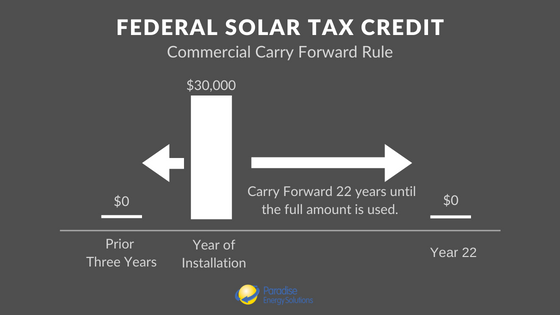
Residential Solar Tax Credit Carry Forward Rule
Homeowners have the benefit of carrying the tax credit forward for up to ten years until it is fully utilized.
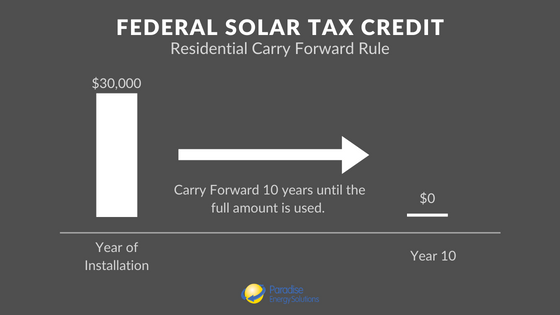
Energy Storage & Solar Batteries: Use The Tax Credit With or Without Solar
Previously, the ITC only applied to battery backup systems that were installed within one year of a solar energy system.
With the IRA, you can take full advantage of the tax credit if you install a battery system regardless of when — or if — you install solar. So whether you installed solar years ago or never have, you can still save a significant amount.
To qualify, energy storage systems must be over 5 kWh. This credit is also dependent on the US Department of Treasury’s energy reduction goal.
Should You Wait If You're Thinking About Installing Solar Panels?
The IRA has ushered in what is perhaps the biggest change for renewable energy in history. But as the finer details get ironed out, waiting to install a system may seem wise. But is that the right choice?
Let's be real here: as solar installers, we might have a slight bias when it comes to saying it's always a great time to go solar. But hey, we're not just blowing hot air - the facts speak for themselves! Consider this:
- All systems under 1 MW will qualify for at least the 30% tax credit until 2025 for businesses and 2032 for homeowners. This equals more of your hard-earned money staying in your pocket where it belongs.
- Energy prices continue to increase across the country at a dizzying pace. When is the last time you saw prices go down?
- For the first time in history, the cost to install solar increased in 2021. This is due to continued supply chain issues, inflation, and demand outpacing supply. We expect this could continue to be an issue as demand created by the IRA ramps up.
- Each day you go without solar is a day you have to pay the utility company for each kilowatt-hour you use.
Are you ready to see what a solar investment could do for you? The first step is to request your custom quote, which will include a complete investment breakdown with all the available tax incentives. Use the button below to get started.
If you're not ready for a quote, get a solid ballpark estimate using our solar savings calculator. After providing some basic information, we'll instantly provide you with an estimated ROI, payback, and a 30-year cash flow.
Originally published December 7, 2016, updated December 2023.



